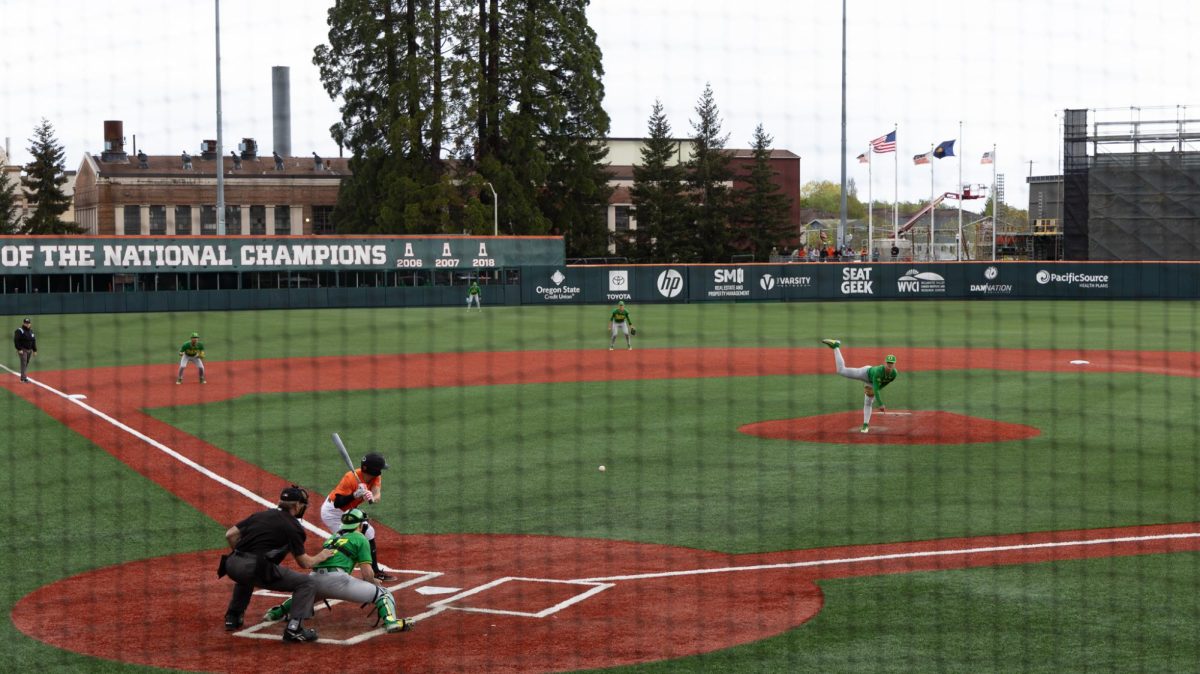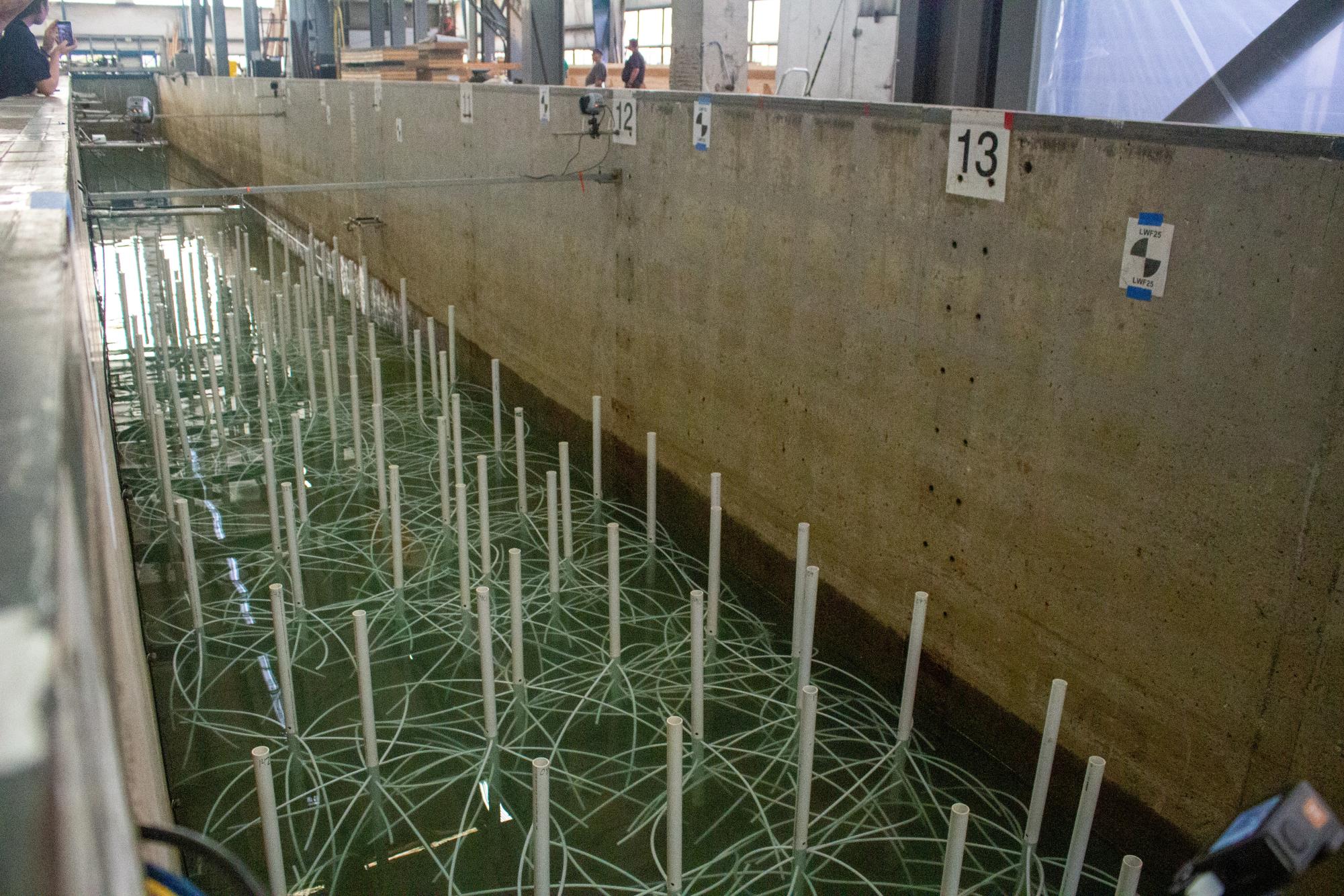A widely held belief is that vegetation helps prevent coastal dune erosion. However, a recently published study involving Oregon State University researchers suggests that may not always be the case.
The study, which was funded by the National Science Foundation and published in Science Advances, suggests that while established vegetation helps to create a physical barrier from strong waves, newly-planted vegetation may actually increase coastal dune erosion during extreme weather events, not prevent it.
The study looked into how different types of coastal dunes erode and was a collaboration between OSU and Texas A&M University and took place at OSU’s O.H. Hinsdale Wave Research Laboratory.
The researchers built up two sand dunes (vegetated and bare) measuring 70 meters long by 4.5 meters high in the wave lab’s 104-meter-long flume.
The sand itself came from the Oregon coast and was transported to the wave lab with help from the Oregon State Parks and the Army, according to Megan Wengrove, assistant professor of coastal and ocean engineering at OSU and co-author of the study.
“It was 76 dump trucks full,” Wengrove said.

(Jiratana Tungkawachara)
For the vegetation, they collected switchgrass, a common type of dune grass from the coast, at first growing the grass in the greenhouse before replanting it on the vegetated dune in the wave lab. They grew the switchgrass for six months before any testing started.
The dunes were then subjected to the storm waves.
“We set up the wave conditions to mimic Hurricane Sandy which hit the East Coast and we scaled the dune that we placed in the flume off of a dune found in New Jersey that was actually damaged by Hurricane Sandy,” Wengrove said.
Vegetation plays an important role in stabilizing dunes and preventing them from being eroded, Michael Harte, professor and associate dean for undergraduate programs for the college of earth, ocean, and atmospheric sciences and who was not a part of the study, said.
“The beach has strong wind and all that sand blows against your legs and gets everywhere,” Harte said. “So what vegetation really does is anchor that and catch sand (and prevent it) from being lifted at the same time. For dunes facing the ocean, the idea is that the roots of … those key plants bind the sand together and prevent it from being eroded by storms and by waves running up against it.”
The study, though, found that this is not always the case for newly-planted vegetation – that it can actually increase the rate of coastal dune erosion.
This is because the roots of newly-planted dune grass are not well established, meaning they are not as capable of stabilizing the dune. The result is that during extreme weather events, with strong wind and powerful waves, the dunes with newly-planted vegetation tend to scarp (where the dune becomes steep and unstable) quicker and therefore erodes more.
While the study found that newly-planted vegetation on dunes may increase coastal erosion, there are caveats to that finding.
“Because they’re newly-planted, an established dune might not have the same types of erosion,” Wengrove said. “And with some current work that we’re doing, we find that when dunes catch sand in windy conditions, the different plant species make a big difference on how they trap the sand, and so it could be that different species might have different ways of holding the sand together.”
These findings are nevertheless helpful for coastal communities, according to Wengrove.
“It’s just good for them to know that your dune is going to be vulnerable for maybe the first two years that it’s in place, and then once it has more of an established root structure, it might become more resilient,” Wengrove said.
The findings also could help inform engineers how to better manage and stabilize dunes, Harte noted.
“The study tells us a lot more about the process of dune erosion, which is really important,” Harte said. “And we can learn more about how to be better at stabilizing dunes.”
The study only looked at switchgrass and there is still a lot more to look into, Wengrove said.














































































































